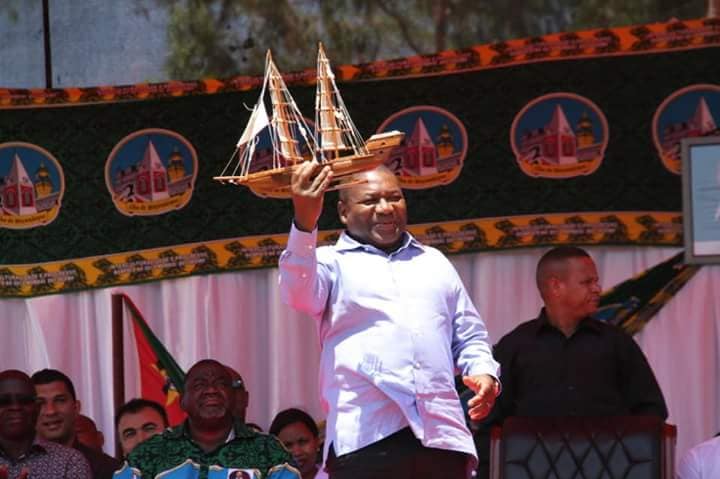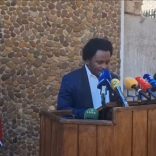Strengthening the partnership between the Ismaili Imamat and the Republic of Mozambique
Nyusi wants “greater visibility” for Mozambique Island

Photo: Amizade com Nyusi / Facebook
Mozambican President Filipe Nyusi on Monday urged the residents of Mozambique Island, off the coast of the northern province of Nampula, to join the government initiatives intended to grant greater visibility to the island as a cultural treasure.
Nyusi was speaking at celebrations to mark the 200th anniversary of the elevation of Mozambique Island to the status of a city. It was the first colonial capital, and eventually it gave its name to the entire country. Its blend of African, Arab and European cultures led UNESCO to proclaim it a world heritage site in 1991.
The President urged the islanders, research institutions and society at large to celebrate the culture and history of the island. “No law can replace the commitment of people and communities who give life to tradition and to cultural expressions”, he declared. “So we urge everyone to join us in this drive to value our material and non-material cultural heritage”.
The promotion of Mozambique Island as a world heritage site, he added, would help improve the quality of life of the islanders, because of the large number of tourists such initiatives might bring to the region.
Accompanied by the Vice-Chancellor of the Eduardo Mondlane University (UEM), Orlando Quilombo, and by US Ambassador Dean Pittman, Nyusi also inaugurated a Centre for Archaeology, Research, and Resources at the São Sebastião Fort on the island. Construction of the Centre was funded by a grant of 188,700 dollars from the US Government’s “Ambassador’s Fund for Cultural Preservation.”
According to a US embassy press release, the development of the Centre has been directed by UEM professors Yolanda and Ricardo Teixeira Duarte, “with the goal of providing a location for Mozambican and international scientists to conduct archaeological research in a modern facility”.
In addition to offering researchers access to specialised tools and workspaces, the Centre will also serve as an exhibition location for discoveries and research findings. The main archaeological investigation on the island today, the “Slave Wrecks Project,” looks to Mozambique Island’s past as a historical centre in the slave trade and attempts to locate and preserve the remains of slave ships that sunk near the island.
The Embassy release declared “the history of the slave trade at Mozambique Island is important to the global narrative of how our modern world developed, and many American citizens have personal ties to this tragic part of history. Preserving and sharing this history will allow Americans to reconnect with their past through heritage tourism to Mozambique”.
“As more and more Americans are drawn to the island’s shores”, the release concluded, “Mozambique’s tourism industry will contribute to the country’s economic stability. This partnership is an optimal example of shared cooperation and diplomacy, and will greatly benefit the citizens of both nations”.












Leave a Reply
Be the First to Comment!
You must be logged in to post a comment.
You must be logged in to post a comment.